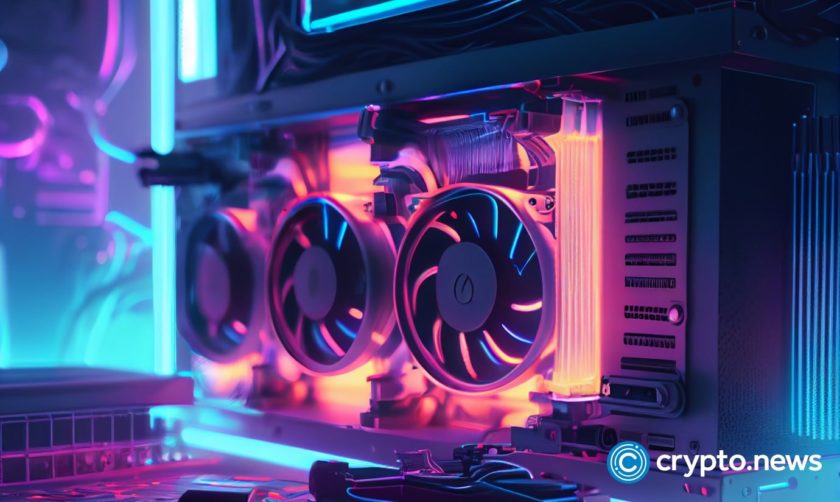The next Bitcoin halving is expected to happen in a little bit more than a week. Meanwhile, the BTC hash rate hit a new record moving above 140 EH/s.
Last few months we are witnessing Bitcoin’s weird race, from total bottoms to crazy revivals. Many investors are attributing this to the upcoming Bitcoin halving that is expected to happen in around 8 days. And, they aren’t entirely wrong, you know. After every halving, Bitcoin ended somewhat higher. Maybe not immediately, but after few months – it did. At the same time, miners have recently watched how the BTC hash rate managed to hit a new ATH.
Since Bitcoin is first created, the halving was deeply programmed in its source code. When making it, Satoshi Nakamoto stated that there will be 21 mln of Bitcoin. Every 210,000 blocks, the block reward is cut in half. So, at the genesis block back in 2009, miners received 50 BTC as a reward. This was reduced to 25 BTC in 2012, and again to 12.5 BTC in 2016. Now, miners will have their rewards cut in half once again.
BTC Halving Offers Pressure on Supply, Driving Demand
After the first halving, the price went up from $12 in November 2012 to a peak of $1,100 in November 2013. Also, the second halving saw a huge rise 11 months later, growing from around $650 in July 2016 to more than $2,500 in May 2017. The clearest explanation of this is that the halving offers a pressure on supply, driving demand.
Still, the last halving was in 2016, before the initial coin offering rampage, before the cryptocurrency derivatives evolved, and a long time before the COVID-19 started ruining the global economy. So, the question that is relevant now is: can we compare the previous situations and its outcomes with this now?
Higher BTC Hash Rate Shows High Miner Participation
The hash rate is an indicator that is useful to track in the period around a halving. A higher BTC hash rate shows more computing power in the network, or, in other words, high participation from miners.
#Bitcoin hash rate hit a new all-time high. pic.twitter.com/XtPbZRU8wp
— glassnode (@glassnode) May 3, 2020
Hash rates around previous halvings were usually showing the same trends to price. For example, in the 2016 halving, the hash rate showed a sharper rise a year later, showing that more miners were attracted by the incline of Bitcoin’s price.
Still, if we take this fact, we also have to add that there was no compelling drop off in the hash rate after the 2016 halving. In fact, the hash rate stood calmly directly after halving in spite of the clear fall in mining profitability.
Mining rewards are just one part of comprehensive mining profitability. Transaction fees are another way that miners gather their income and looking at transaction fees around the last halving, there was also no important change following the event. Same as price and hash rate, transaction fees grew 11 months after the last mining event in 2016.
Lennix Lai, the director of financial markets at OKEx, said miners may be put off by the prospect of decreasing rewards and only earning income from transaction fees.
He said:
“With the expected cut in block rewards, I think the industry would start by questioning the basic assumption of halving — whether or not the transaction fees alone would be sufficient to sustain the entire Bitcoin network.”
Bitcoin’s Hash Rate as a Key Indicator
There are more immediate precedents for halvings as Bitcoin Cash (BCH) and Bitcoin SV (BSV) both recently went through halving events — and both saw a drop-off in hash rate immediately afterward. Diego Gutierrez Zaldivar, the CEO of IOVlabs, which operates the RSK network, said there is no explanation.
He said:
“Bitcoin has around 50 times the economic security of Bitcoin Cash and around times the economic security of Bitcoin SV, so even in the case of a big drop in hashing power, Bitcoin will remain the safest decentralized network in the world.”
Be it as it may, it’s not really likely that the Bitcoin halving will follow the BCH and BSV examples. The truth is, the Bitcoin network is more secure, and because of the current economic conditions, Bitcoin is into a solid position right now.
Bitcoin as the Inflation Cure
Central banks are now using quantitative easing to pump fiat money into their economies, which will ultimately cause inflation. Joel Edgerton, the COO at bitFlyer, stressed that many bought Bitcoin during the recent crash, and so the drivers for the current halving may be different.
Samson Mow, the chief strategy officer of Blockstream, agrees that this Bitcoin halving is unique because of the extraordinary amount of money being printed that is pretty much bullish for Bitcoin.
He said:
“I think we’ve yet to see the full extent of economic uncertainty and COVID-19 impacting Bitcoin. The average person is only just starting to realize that Bitcoin is the only real safe haven for their money.”
At the press time, Bitcoin was down 1.13% and was trading at $8,850.
Experienced creative professional focusing on financial and political analysis, editing daily newspapers and news sites, economical and political journalism, consulting, PR and Marketing. Teuta’s passion is to create new opportunities and bring people together.




